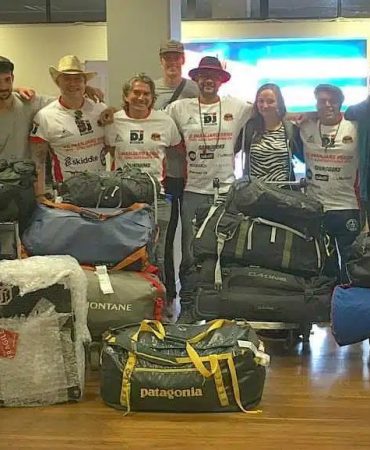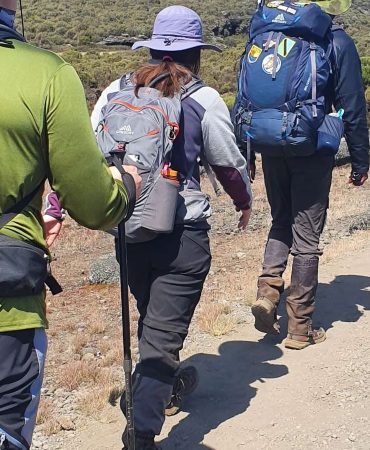Summit: Discover the transformative journey of summiting Mount Kilimanjaro. Learn invaluable life lessons and gain insights that will inspire and empower you to achieve your own summit success.



Summit
Introduction
Embarking on the journey to climb Mount Kilimanjaro is more than just conquering Africa’s highest peak. It’s a transformative experience that leaves climbers with profound insights and life-changing lessons. In this comprehensive guide, we’ll delve into the remarkable journey of summiting Kilimanjaro and uncover the invaluable lessons learned along the way.
Unveiling Kilimanjaro’s Majesty
Casting a majestic silhouette against the African sky, Mount Kilimanjaro beckons adventurers from around the world. Standing at 5,895 meters (19,341 feet) above sea level, Kilimanjaro is not just a mountain; it’s a symbol of determination, resilience, and the pursuit of excellence.
Preparing for the Ascent
Before setting foot on Kilimanjaro’s slopes, meticulous preparation is essential. From physical conditioning to mental fortitude, climbers must equip themselves with the necessary skills and mindset to tackle the challenges that lie ahead.
The Journey Begins: Base Camp Exploration
As climbers ascend Kilimanjaro, each step brings them closer to the summit. Along the way, they traverse diverse landscapes, from lush rainforests to alpine deserts, marveling at the rich biodiversity and stunning vistas that unfold before them.
Overcoming Adversity: Challenges on the Trail
Summiting Kilimanjaro is no easy feat. Climbers face a myriad of challenges, including altitude sickness, fatigue, and unpredictable weather conditions. Yet, it’s through overcoming these obstacles that true strength and resilience are forged.
Summit Success: Reaching the Roof of Africa
Standing atop Uhuru Peak, the highest point on Kilimanjaro, is a moment of unparalleled triumph. As climbers gaze upon the vast expanse below, they’re filled with a sense of accomplishment and awe, knowing they’ve conquered not just a mountain, but their own limitations.
Reflecting on the Journey: Lessons Learned
The journey to Kilimanjaro’s summit is fraught with physical and mental challenges, but it’s also a profound learning experience. Climbers emerge from the expedition with newfound wisdom, resilience, and a deeper appreciation for the power of perseverance.
Embracing Growth and Transformation
Summiting Kilimanjaro is more than just a physical achievement; it’s a journey of personal growth and transformation. Climbers return home with a renewed sense of purpose, empowered to tackle life’s challenges with courage, resilience, and determination.
FAQs (Frequently Asked Questions)
How long does it take to climb Kilimanjaro? The duration of a Kilimanjaro climb varies depending on the chosen route. On average, most climbers opt for a 7-9 day trek to allow for proper acclimatization and increase their chances of reaching the summit successfully.
What is the best time of year to climb Kilimanjaro? The best time to climb Kilimanjaro is during the dry season, which typically runs from late June to October. During this time, the weather is more predictable, and the skies are clearer, offering optimal climbing conditions.
Is climbing Kilimanjaro dangerous? While climbing Kilimanjaro poses inherent risks associated with high-altitude mountaineering, proper preparation, experienced guides, and adherence to safety protocols significantly mitigate these risks. With careful planning and adequate training, Kilimanjaro can be climbed safely by adventurers of varying skill levels.
What should I pack for a Kilimanjaro climb? Packing essentials for a Kilimanjaro climb include appropriate clothing for varying temperatures, sturdy hiking boots, high-altitude gear, personal medication, and essential toiletries. It’s essential to pack light yet adequately prepare for the challenging conditions encountered on the mountain.
How much does it cost to climb Kilimanjaro? The cost of climbing Kilimanjaro varies depending on several factors, including the chosen route, duration of the climb, level of service, and amenities provided. On average, climbers can expect to budget between $1,500 to $5,000 for a Kilimanjaro expedition, excluding international airfare and additional travel expenses.
What is the success rate of climbing Kilimanjaro? The success rate of climbing Kilimanjaro varies depending on several factors, including the climber’s physical fitness, altitude acclimatization, weather conditions, and route chosen. On average, the success rate ranges from 60% to 70%, with proper preparation and experienced guides significantly increasing the likelihood of summit success.
Conclusion
Summiting Kilimanjaro is a transformative journey that transcends mere mountaineering. It’s a testament to the human spirit’s resilience, determination, and capacity for growth. Each step taken toward the summit is not just a physical ascent but a profound inner journey of self-discovery and empowerment. As climbers conquer Kilimanjaro’s peaks, they emerge stronger, wiser, and more resilient, carrying with them the invaluable lessons learned from the mountain’s majestic heights.




